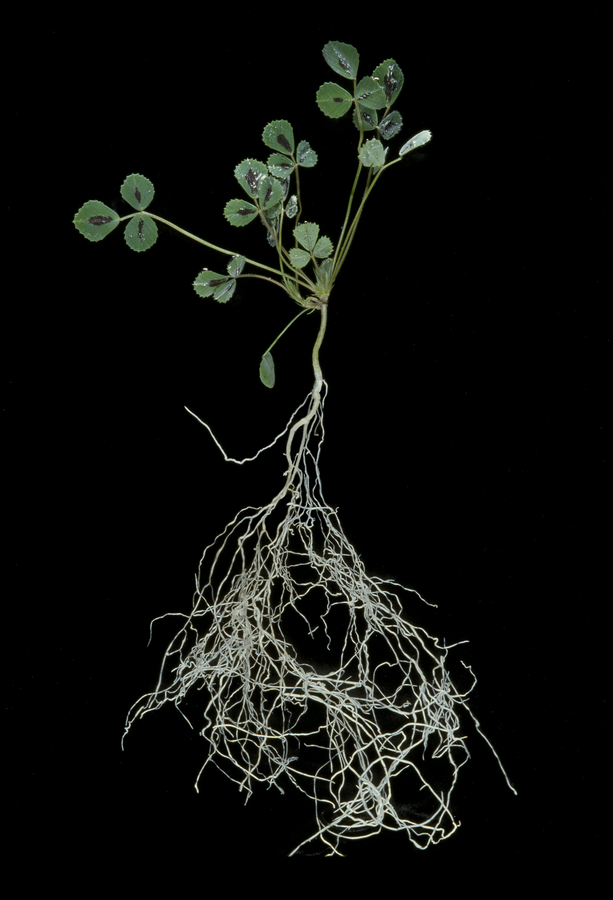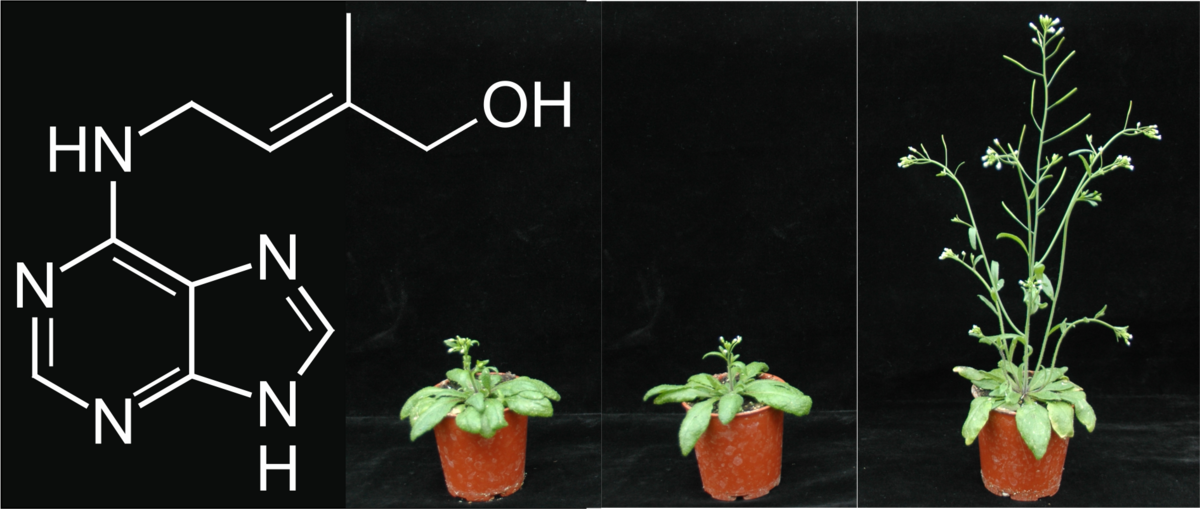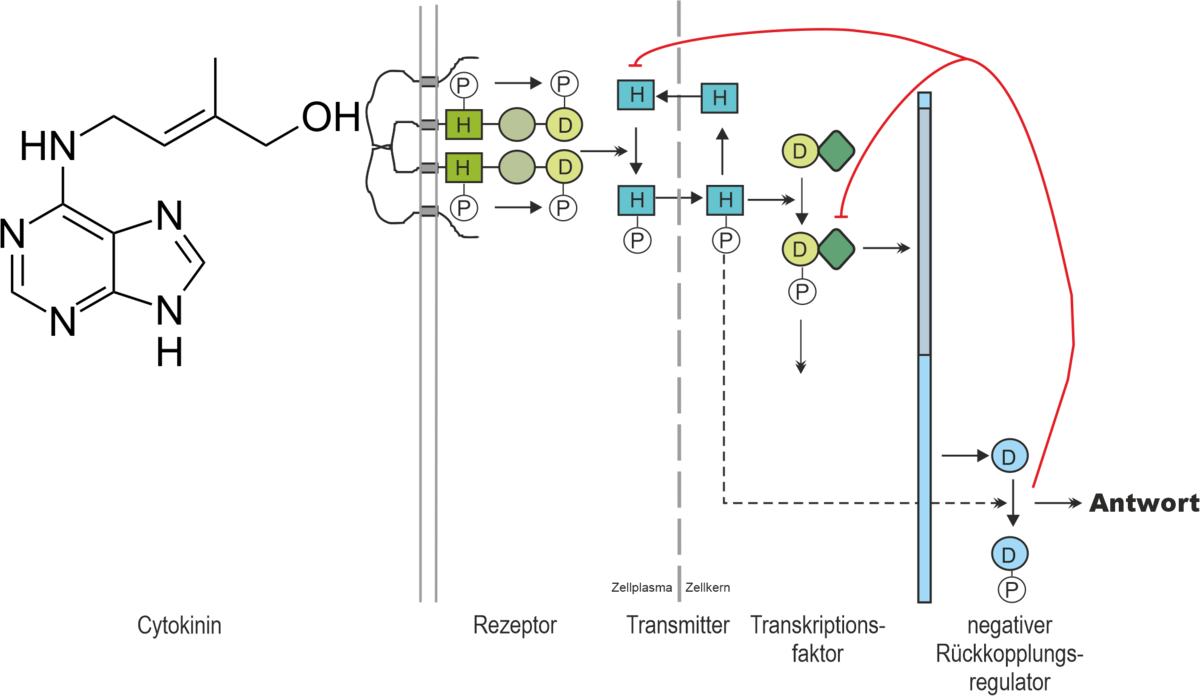The department of general and applied botany follows three general fields of research:
Firstly, the symbiotic interaction between plant roots and specialized fungi in arbuscular mycorriza along with the effects on the nutrient value of the above-ground organs for insects,
Secondly, plant developmental biology and hormone physiology, and
Thirdly, hypoxia in plants and nitric oxide as signal molecule.
These research directions are combined in projects to investigate possible interplays and interactions.
Research subjects

More than 80 % of all land plants, including almost all crop plants (with the notable exception of the brassicaceae) are capable of establishing an intimate symbiosis with arbuscular mycorrizal fungi (AMF). The plants profit significantly from the symbiosis with AMF. Nutrient supply is improved, ant the plants are more tolerant towards biotic and abiotic stress.
AMF symbioses ar ubiquitous and occur in almost all agricultural and natural terrestrial ecosystems.
They significantly influence growth, reproduction, and diversity of plants, but also important ecosystem functions such as C, N, and P cycles.
Despite their enormous economical and ecological importance, the molecular mechanisms of AM symbioses are still barely understood, mainly because of the obligatory biotrophic life style of AMF. Our research deals with physiological and cell biological aspects of the molecular coltrol of AM symbioses and their effects on stress tolerance in plants.
The fungal partners are part of the phylum Glomeromycota. As a model plant, we are using the legume Medicago truncatula.
Hormone physiology
Cytokinin is a plant hormone that has numerous functions throughout the entire life cycle of a plant. For instance, it controls growth of root and shoot, plays a role in branching of root and shoot, and is involved in the defense against pathogens.
After perception of a sudden increase of cytokinin concentration by membrane-bound receptors, the signal is transmitted by a histidin-aspartate phosphorelay chain into the nucleus where it activates transcription factors. These in turn activate the transcription of primary cytokinin response genes. Among them are negative feedback regulators, which downregulate the transcription of the primary response genes. To investigate the negative feedback dynamics is the topic of an ongoing research project. The exact time course of gene expression after a cytokinin pulse is just as little investigated as the the response of the system to a sudden decrease of the cytokinin concentration, a scenario that is experienced by young cells exiting the shoot apical meristem.
Plant developmental biology
The life of a plant is divided into a number of developmental phases, which follow each other after an exact plan. The phase transitions can be governed by a number of triggers, which either act upon the plant from the environment, or which arise from the plant itself. Correct timing of some of these phase transitions can be essential for survival and reproductive success of an individual plant, particularly regarding germination and flowering.
F-box Proteins are signal molecules, which act by initiating the targeted degradation of specific proteins. The signal of the plant hormone auxin, for instance, is transduced by F-box proteins, which act by marking transcriptional inhibitors for immediate degradation, allowing the transcription of the primary auxin response genes.
Mutants of two uncharacterized redundant F-box proteins in Arabidopsis thaliana show a conspicuous delay in flowering. Additionally, the onset of seed development after fertilization seems to be delayed. The function of both F-box proteins is essential because no plants exist in which the function of both proteins is lost: The development of the seed can no longer be initiated after fertilization.
In the current project phase, the effects of a partial loss of function are thoroughly characterized. For this purpose, an additional mutant allele is generated using CRISPR/Cas9. In a follow-up project, the target proteins of the two F-box proteins will be identified. The current working model proposes that these target proteins have to be degraded in order to make a phase transition happen. This way, the understanding of phase transitions in plant development will be supplemented with a new mechanism of action.
As sessile organisms, plants are exposed to various environmental stresses. Therefore, they require different molecular and physiological mechanisms to survive under undesirable conditions such as flooding, drought, and nutrient deficiency. This provides a very exciting field of research that is directly connected to the current and future challenges in the environment, agriculture, and food supply.
Green algae, on the other hand, are close relatives of land plants. As some green microalgae grow quickly and are amenable to genetic modification, we are using them as easy systems to explore their response to abiotic stress. Comparing the molecular and cellular mechanisms will permit a broad perspective on stress tolerance in land plants and green algae.
Our research program focuses on the major threats to plants in the context of climate change and its impacts on agriculture and food production:
-
investigating the genes and molecular players involved in stress response and tolerance, e.g. hypoxia, drought, and nitrogen deficiency
-
exploring the role of nitric oxide (NO) as a signal molecule under abiotic stress conditions in land plants and green algae as well as its role in mycorrhiza symbiosis
To achieve these aims, we apply a combination of plant physiology and molecular biology techniques. Arabidopsis thaliana and Chlamydomonas reinhardtii serve as model species and tomato (Solanum lycopersicum) is investigated as an important crop.
Eventually, the outcome of this research will shed more light on the responses to abiotic stress and unravel how land plants and green algae interact with their environment. Investigating the stress response has the potential for improving the stress resistance of crops and minimizing yield loss due to global warming.



